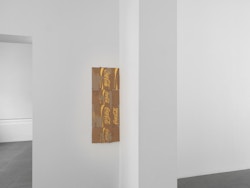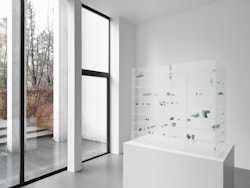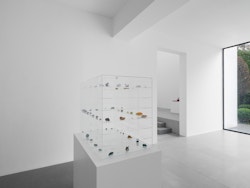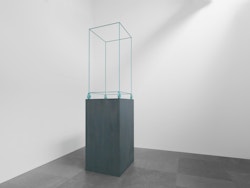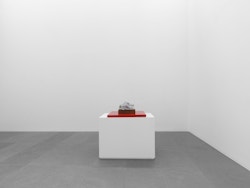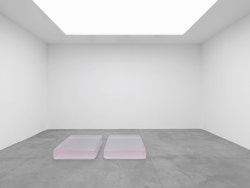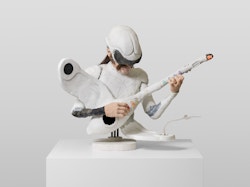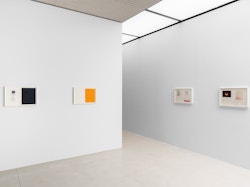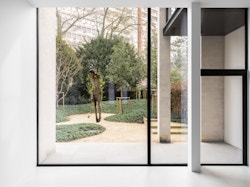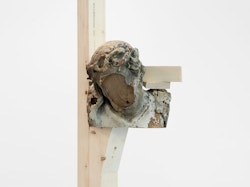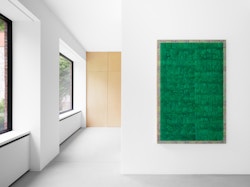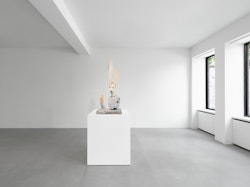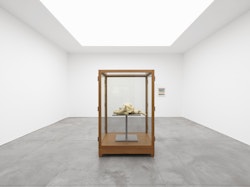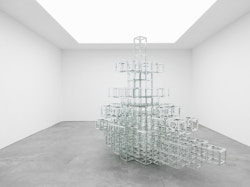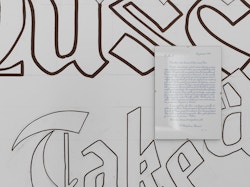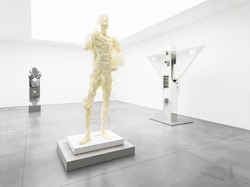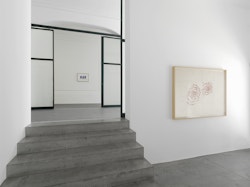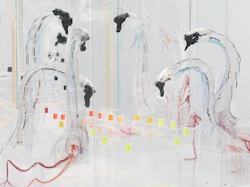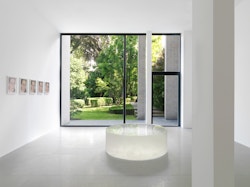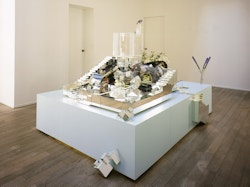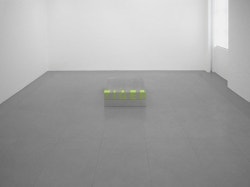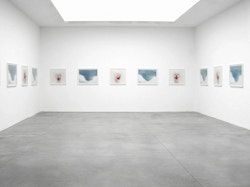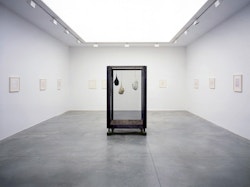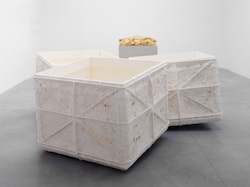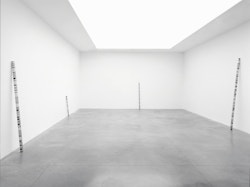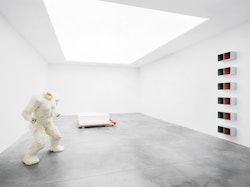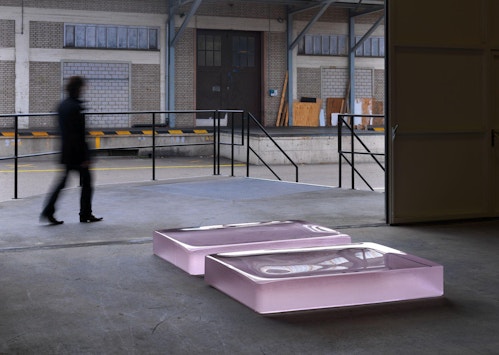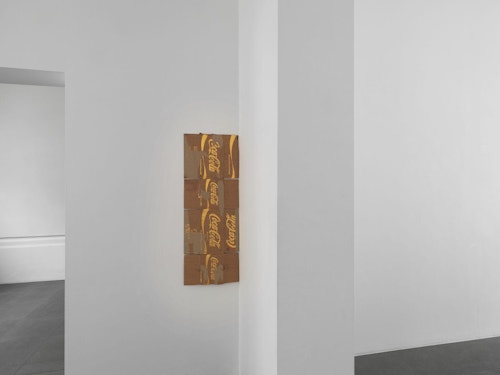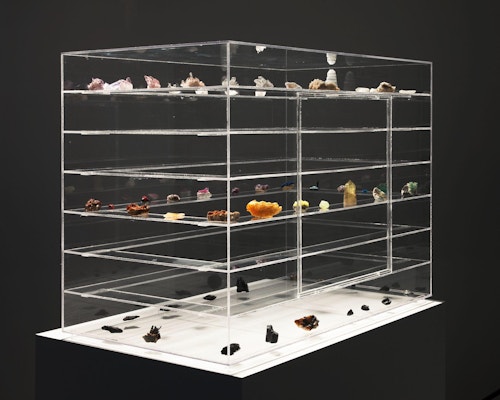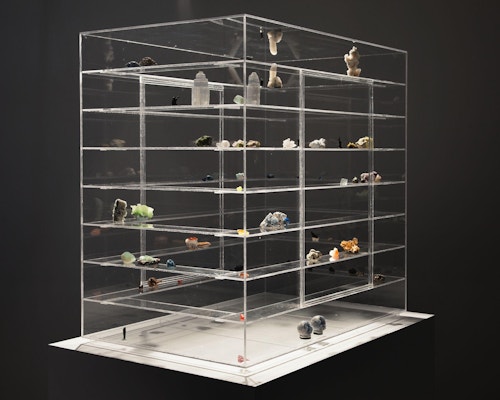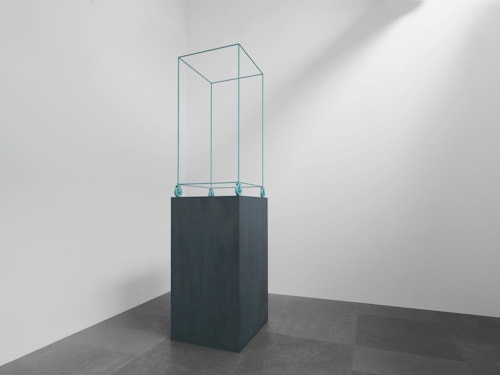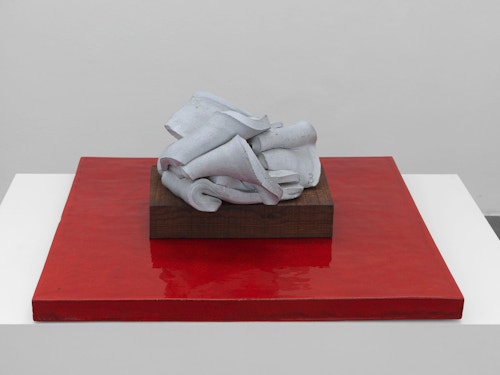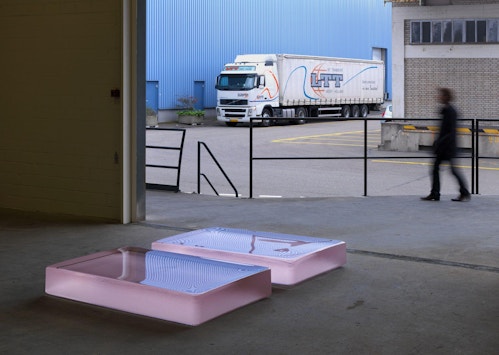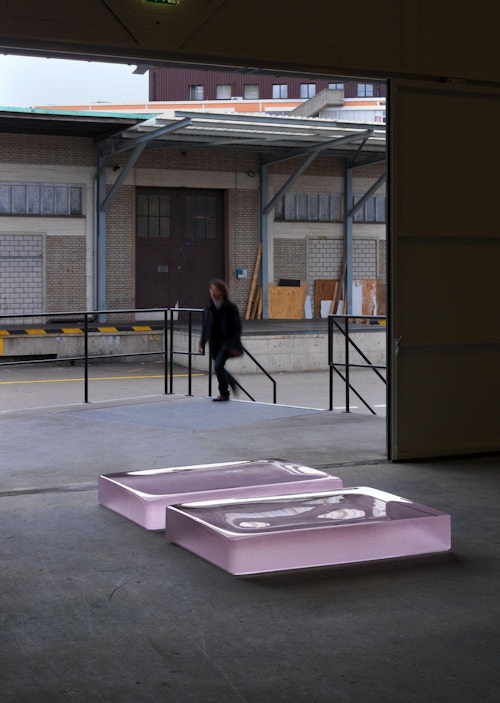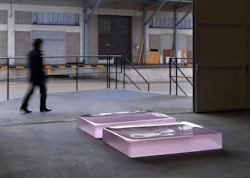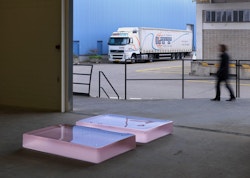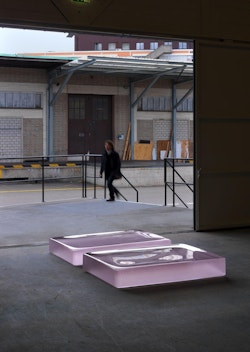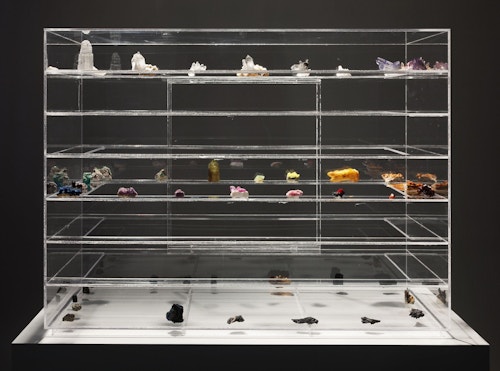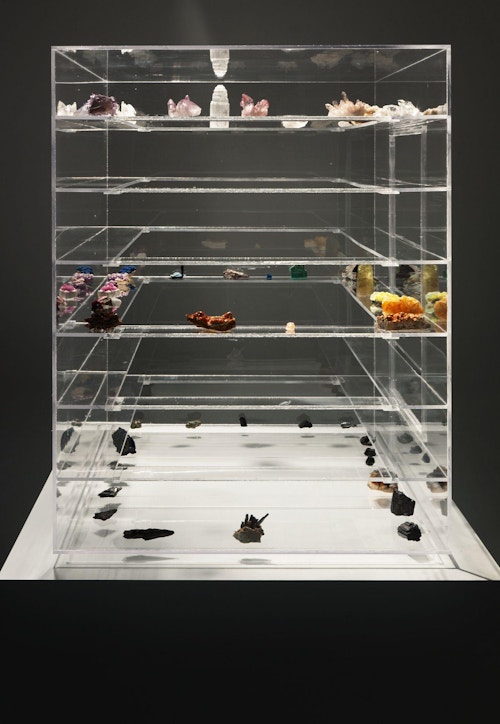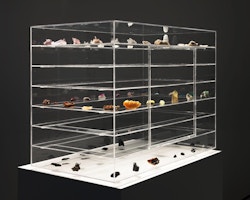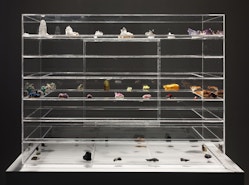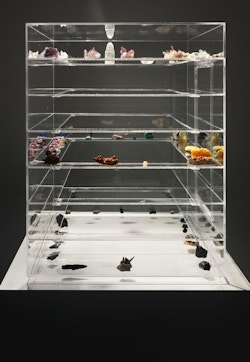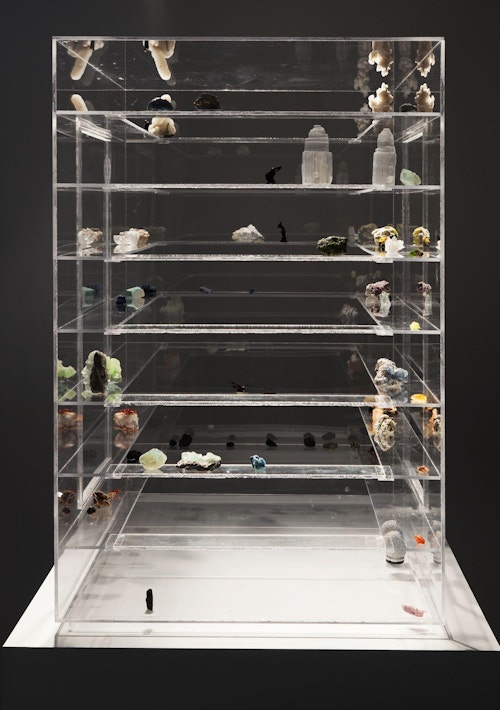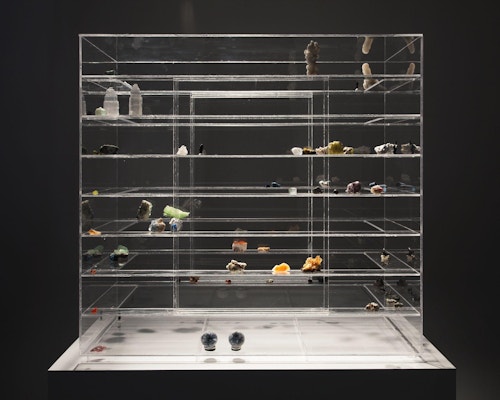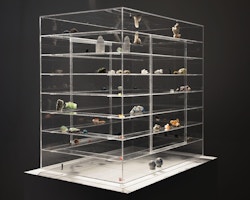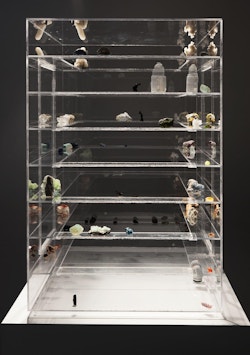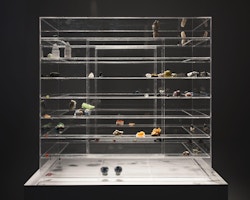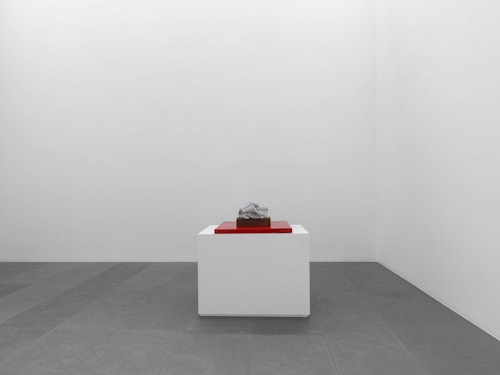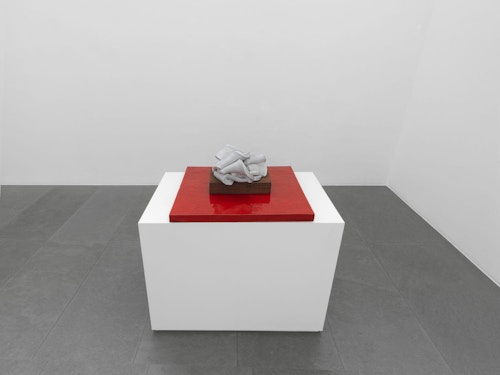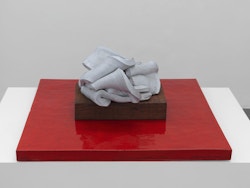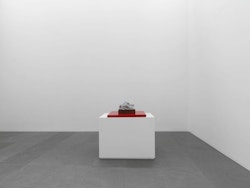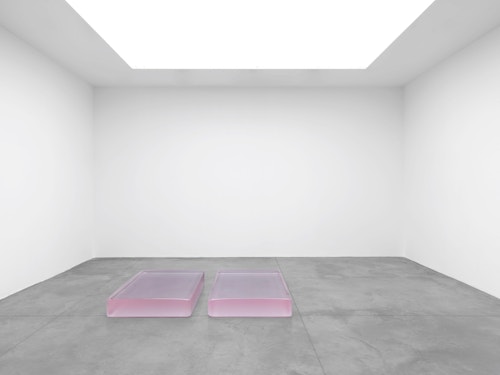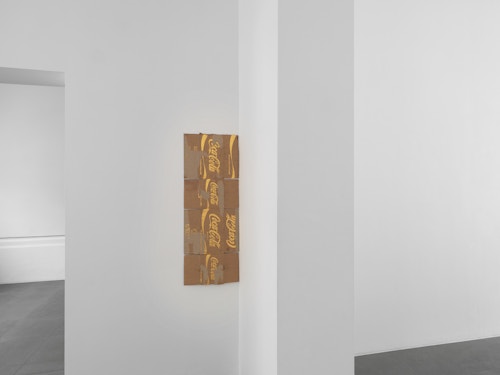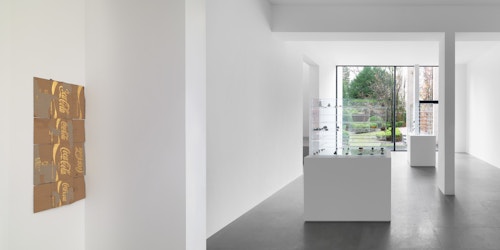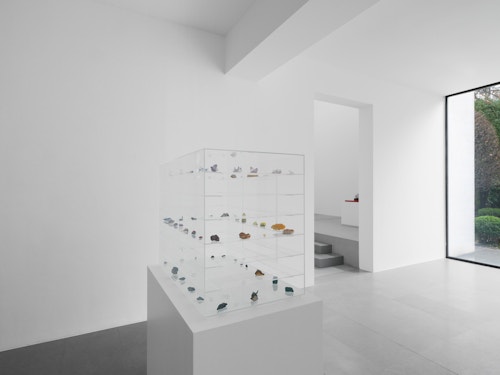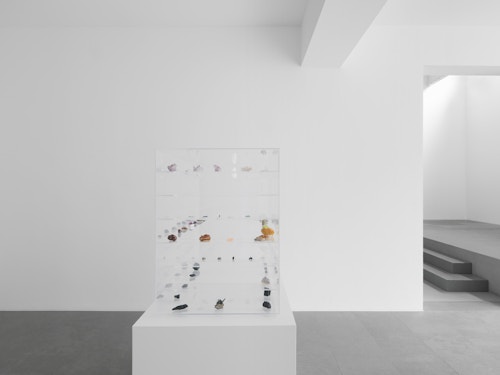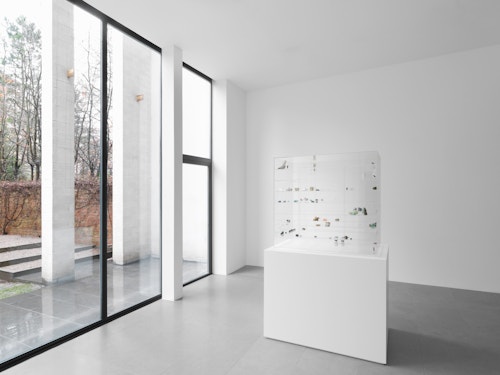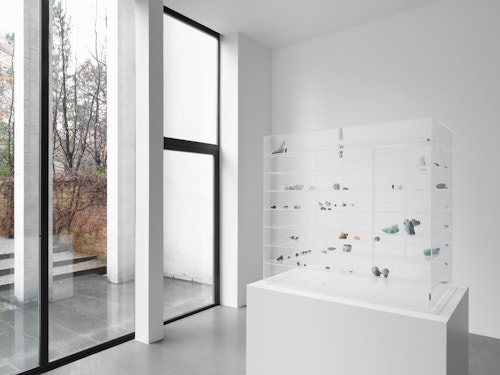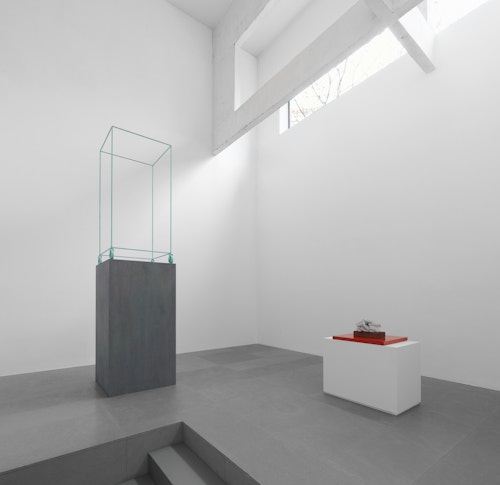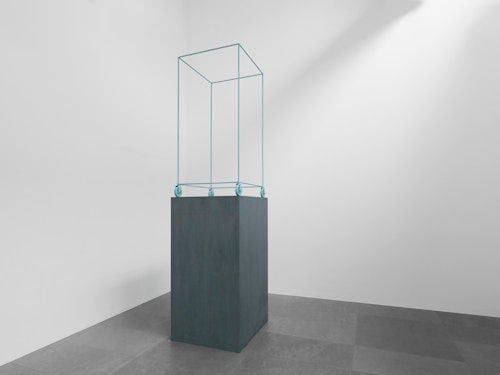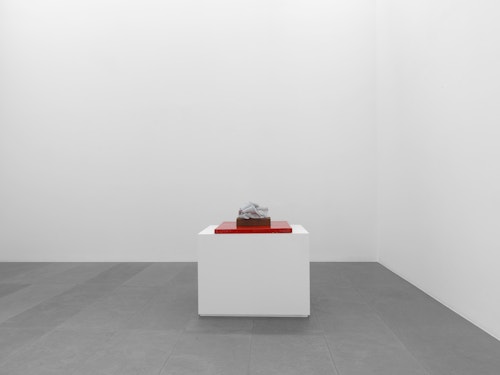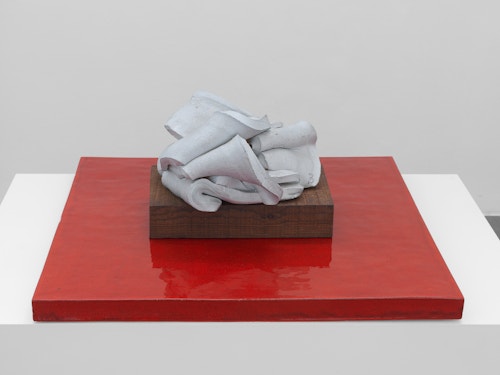
David Altmejd, Roni Horn, Didier Vermeiren, Danh Vō
Untitled 1 (Spectres) and Untitled 3 (Spectres) form part of David Altmejd’s on-going series of sculptures that take the form of Plexiglas vitrines. These are broadly divided into two categories: monumental cases featuring intricate landscapes made up of hands and heads, cast fruit, thread and smashed mirrors, for example, and smaller vitrines typically containing arrangements of rare crystals and minerals. While Altmejd’s displays are reminiscent of those found in natural history museums, and are thus symbolic of order, classification and knowledge, they go beyond mere museological concerns. While the transparency of the cases encourages a closer inspection of the contents, the scale of the vitrines prevents the viewer from immediately grasping the whole. Only by walking around the sculptures, and by scrutinising them from every perspective – on a macro and micro level – is it possible to truly absorb the works in their entirety. And unlike museum displays, which typically aim to be encyclopaedic, Altmejd’s enigmatic ensembles are full of lacunae, including empty shelves (Untitled 1). Originally trained as a biologist, crystals feature extensively in Altmejd’s work. By placing them in vitrines, however, the objects become almost fetishized – but it is up to the viewer to decide which taxonomies, if any, underpin their seemingly idiosyncratic arrangement.

Roni Horn’s Two Pink Tons is a two-part sculpture cast in solid glass which, depending on the light, or the position of the viewer, can be breathtakingly transparent or dramatically reflective. The matte sides are the result of the glass coming into contact with the surface of the mould, whereas the slightly concave tops were only exposed to the air during the casting process and have thus remained glossy. Looking down into them is like staring into pools of molten glass. Subsequently fire-polished, the transparent yet mirror-like surfaces of the sculpture confound the senses: Two Pink Tonsis both heavy yet apparently immaterial, solid but constantly changing, voluptuous but inherently cold and hard. In this sense, the sculpture is the materialization of mutability, a rendering of the potential for change – not just within matter, but also within our physical and spiritual selves. Another reading of the work would be to consider it in terms of gender: the rectangular forms, with their echoes of minimalism, might be perceived as ‘masculine’ while the delicate pink hues could be seen as ‘soft’ and ‘feminine’. Together, these qualities are suggestive of androgyny.
Didier Vermeiren belongs to a generation of artists who, since the 1970s, has been drawing on the legacy of conceptual art and minimalism. While Roni Horn’s Two Pink Tons rests directly upon the gallery floor, Place is both plinth and sculpture. Vermeiren has been occupied with the history and specific nature of sculpture since the 1970s, more specifically the plinth. The fraught relationship between sculpture and pedestal is often viewed as a metaphor for the correlation of sculpture and reality – with Vermeiren subscribing to Brancusi’s belief that the plinth is integral to the work. Placeis from a series of sculptures by Vermeiren that feature metal ‘cages’ on wheels. In this case, although the sculpture has wheels it does not stand on them. Rather, it balances on a plinth of equal proportions. Vermeiren: ‘If you stand in front of these works you can see that they do not completely conceal the floor underneath them. For me, it was always clear that a sculpture has a front, a back and various sides. The wheels give the work a forward and backward orientation and in this way they at once define and limit its sideways extension. The wheels are there and they indicate a movement, but the movement does not actually have to occur.’ While Vermeiren has often cited Rodin as a key modernist sculptor, his ‘wagon’ or ‘cage’ works refer explicitly to Giacometti’s idea that a sculpture is defined not just by the object, but also by the surrounding space.
Solide plastique #4 is part of a series of works that was created in the late 1990s and which marked an important shift in Vermeiren’s oeuvre. In these works, Vermeiren explored ‘anti-form’: slabs of clay thrown on a plinth, with only gravity exerting some kind of impact on the material before firing. Highly sensual, these works have been described as ‘sculptural flesh’. The title, Solide plastique, refers to the transformation of clay – from soft and pliable during handling to hard and solid after firing. Clay, an essential yet ultimately invisible element of the classical sculptural production process, now becomes sculpture in its own right. In the Solide plastique series, Vermeiren illuminates the various relationships between body and mass, sculpture and plinth, form and mould, immobility and movement, as well as the position of the sculpture in space and its relationship with the spectator. Vermeiren: ‘But my subject is really about presence. The presence of what? The presence of my work, of my sculpture. Nature? It does not feature in my work. What could be there, what is actually present in my work, and what becomes visible in it, is the human body. Consequently, the sculpture has the measure of the body that has worked on it and made it. The body, yes, the human body.’
David Altmejd was born in Montréal, Canada in 1974. He lives and works in New York. Recent solo exhibitions include: Brant Foundation Art Study Center, Greenwich, CT (2011), Conte crépusculaire [Twilight Tale] at the Galerie de l’UQAM, Montreal, Canada, (2011) and Colossi at the Vanhaerents Art Collection, Brussels (2010).
Roni Horn was born in New York in 1955. She lives and works between New York and Reykjavik, Iceland. Recent solo exhibitions include: Schirn Kunsthalle, Frankfurt am Main, Germany (2013), Sammlung Goetz, Munich, Germany (2012) and the Hamburger Kunsthalle, Hamburg, Germany (2011). Her work was the subject of a major retrospective in 2009: Roni Horn aka Roni Horn (Whitney Museum of American Art, New York; Collection Lambert, Avignon; Tate Modern, London; ICA – Institute of Contemporary Art, Boston).
Didier Vermeiren was born in Brussels in 1951, where he continues to live and work. Recent solo exhibitions include: Didier Vermeiren. Skulpturen, Skulpturenpark Walfrieden, Wuppertal, Germany (2012-2013), Etude pour le monument à Philippe Pot (1996-2012), Eglise de Saint-Philibert, Dijon, France (2012), Didier Vermeiren, La Maison Rouge, Paris, France (2012) and Didier Vermeiren. Sculptures, Museum Dhondt-Dhaenens, Deurle, Belgium (2012).
Danh Vo was born in Vietnam in 1975 and brought up in Denmark. He currently lives and works in Berlin. He exhibited at the Venice Biennale in 2013 and was the winner of the 2012 Hugo Boss Prize. Vo was awarded the BlauOrange Kunstpreis der Deutschen Volksbanken und Raiffeisenbanken in 2007 and was nominated for the Preis der Nationalgalerie für junge Kunst in 2009. Recently solo exhibitions include Go Mo Ni Ma Da at the Musée d’art moderne de la Ville de Paris (2013), I M U U R 2 at the Solomon R. Guggenheim Museum, New York (2013), Uterus at the Renaissance Society/University of Chicago (2012) and We The People (details) at the Art Institute of Chicago and the National Gallery of Denmark, Copenhagen (2012).
